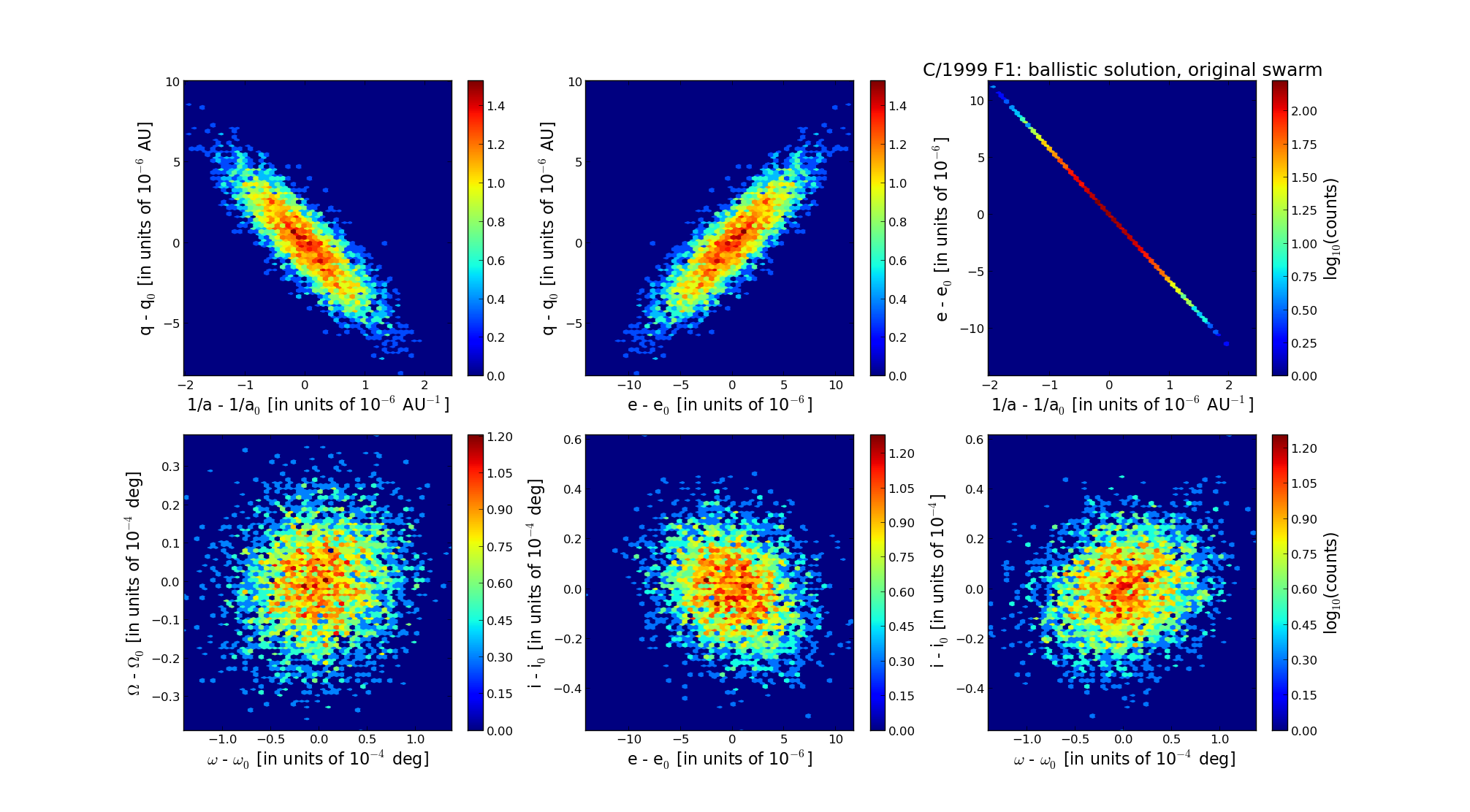| Solar System Dynamics & Planetology Group |
 |
C/1999 F1 Catalina |  |
| Solar System Dynamics & Planetology Group |
 |
C/1999 F1 Catalina |  |
| number of observations | 168 |
| number of residuals | 330 |
| data interval | 1999 Mar. 13 — 2005 Aug. 28 |
| rms [arcsec] | 0.43 |
| orbit quality class | 1a+ |
| Epoch (TT) | 20020215.0 | = JD 2452320.5 |
| time of perihelion passage (TT) | 20020213.749973 | ± 0.000540 |
| perihelion distance | 5.78693483 | ± 0.00000227 |
| eccentricity | 0.99884880 | ± 0.00000334 |
| argument of perihelion [deg] | 255.166695 | ± 0.000040 |
| longitude of the ascending node [deg] | 20.012519 | ± 0.000011 |
| inclination [deg] | 92.029856 | ± 0.000014 |
| inverse semimajor axis [10-6 au-1] | 198.93 | ± 0.58 |

| Epoch (TT) | 16950224 | |
| time of perihelion passage (TT) | 20020213.923640 | ± 0.000557 |
| perihelion distance | 5.78838144 | ± 0.00000234 |
| eccentricity | 0.99978554 | ± 0.00000343 |
| argument of perihelion [deg] | 255.192725 | ± 0.000041 |
| longitude of the ascending node [deg] | 20.024735 | ± 0.000011 |
| inclination [deg] | 91.973855 | ± 0.000014 |
| inverse semimajor axis [10-6 au-1] | 37.05 | ± 0.59 |
| Epoch (TT) | 23081228 | |
| time of perihelion passage (TT) | 20020214.775850 | ± 0.000569 |
| perihelion distance | 5.78376567 | ± 0.00000235 |
| eccentricity | 0.99982188 | ± 0.00000343 |
| argument of perihelion [deg] | 255.166558 | ± 0.000041 |
| longitude of the ascending node [deg] | 20.001696 | ± 0.000011 |
| inclination [deg] | 91.989935 | ± 0.000014 |
| inverse semimajor axis [10-6 au-1] | 30.80 | ± 0.59 |